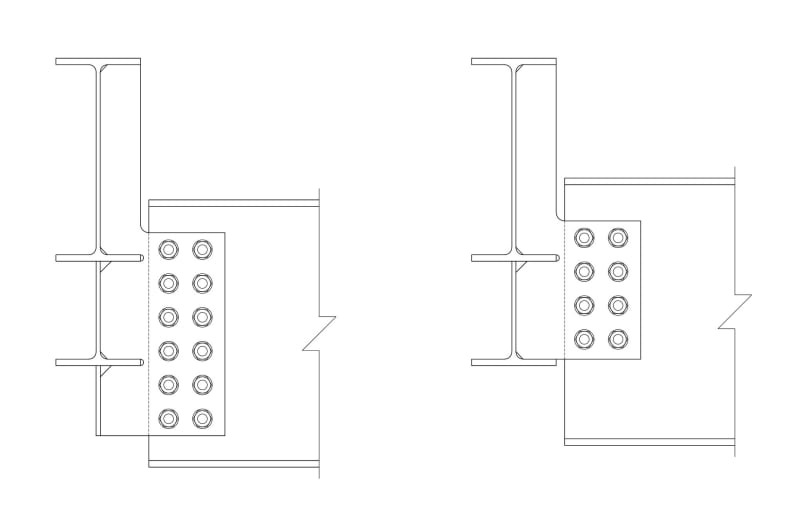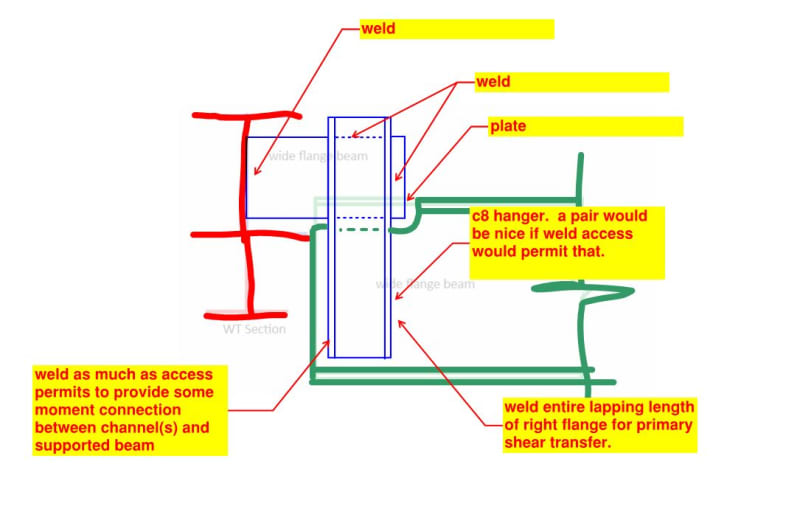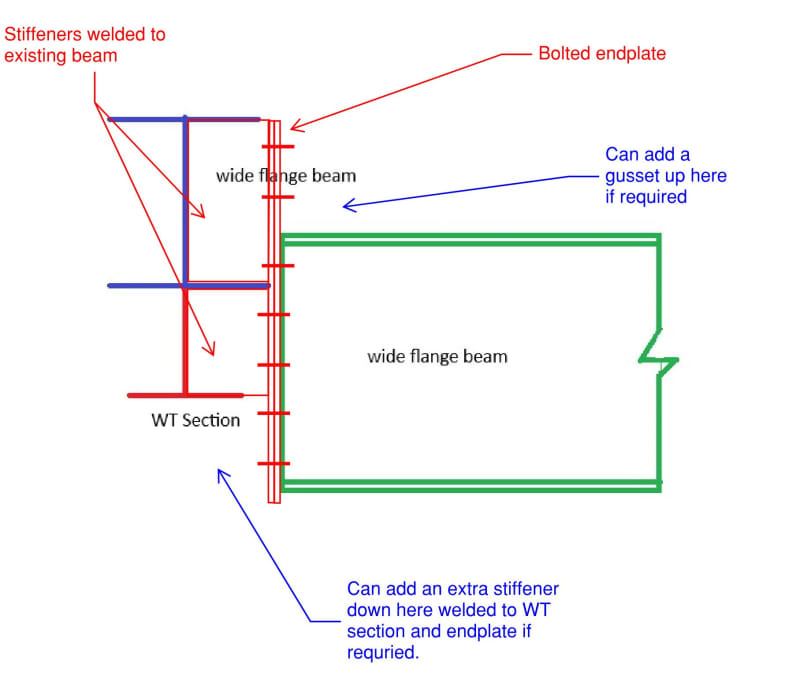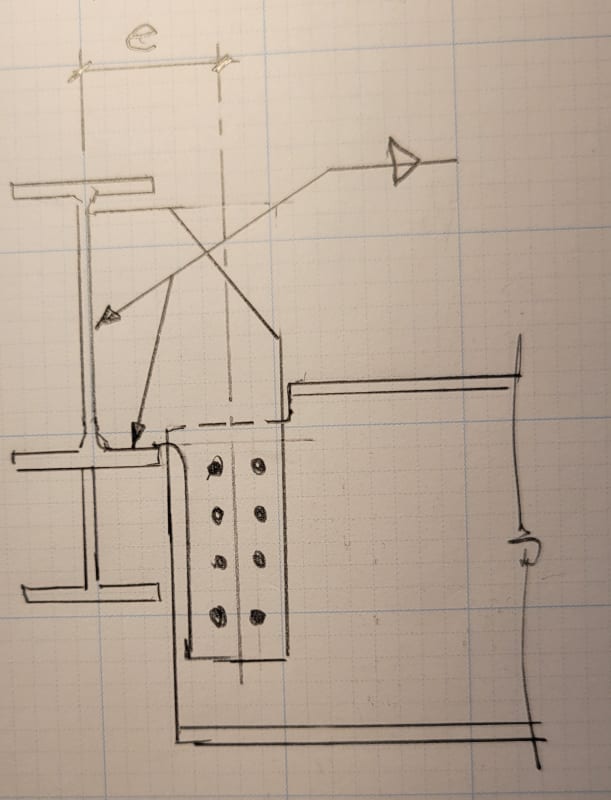anchorengineer
Structural
- May 26, 2009
- 88
Hi All,
I'm looking for a relatively clean way to connect a wide flange beam to an existing beam reinforced with a WT section at the bottom. The extra challenge is that the connecting beam is lower than the the reinforced beam. Please take a look at the attached sketch. I hate to cope too much of the web of the attaching beam and I'm concerned about construct-ability/weld-ability. I'd appreciate any thoughts or feedback.
Thanks!
I'm looking for a relatively clean way to connect a wide flange beam to an existing beam reinforced with a WT section at the bottom. The extra challenge is that the connecting beam is lower than the the reinforced beam. Please take a look at the attached sketch. I hate to cope too much of the web of the attaching beam and I'm concerned about construct-ability/weld-ability. I'd appreciate any thoughts or feedback.
Thanks!




